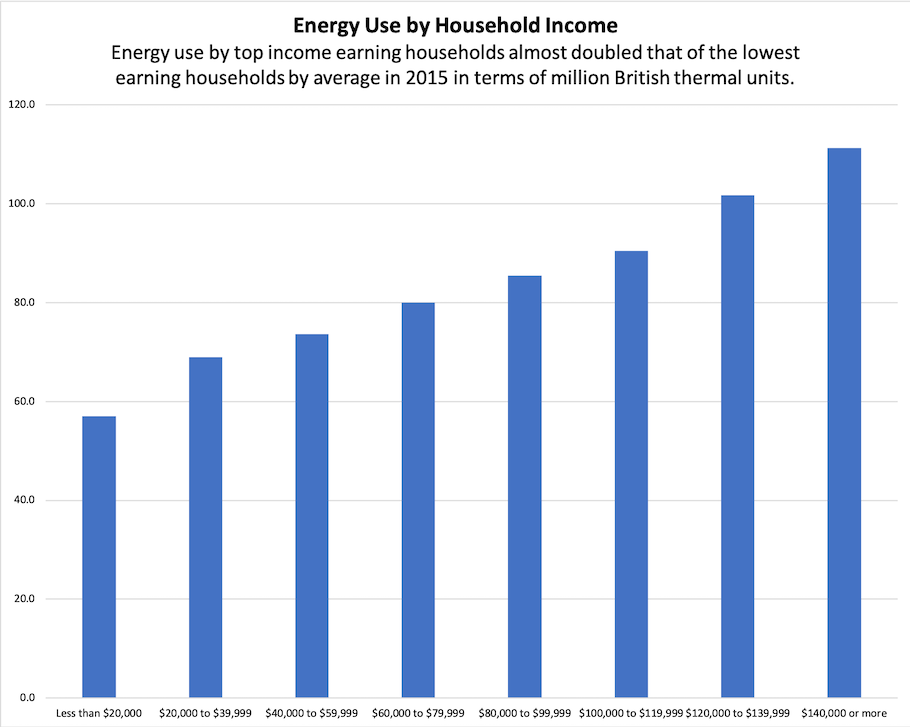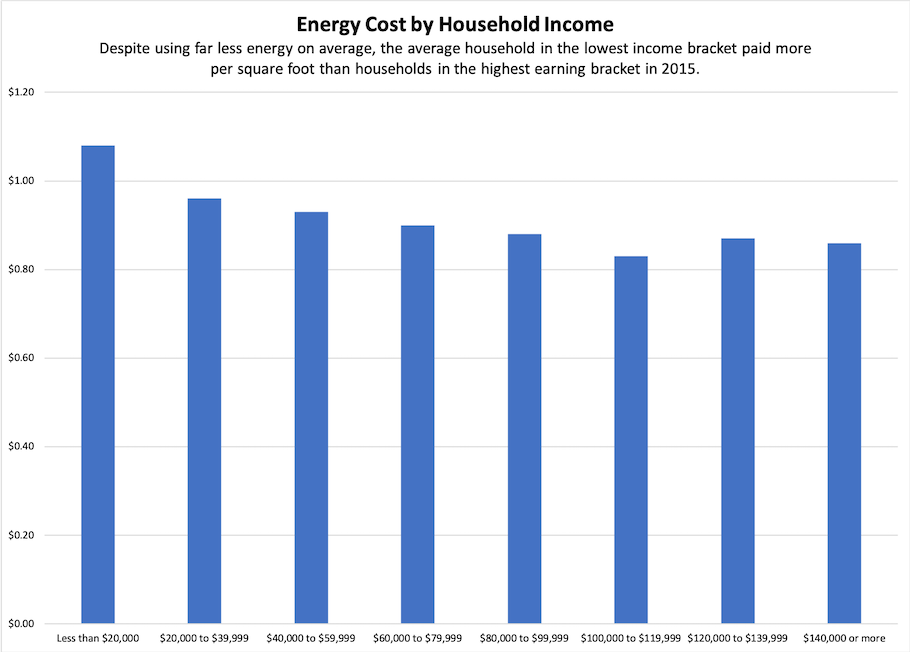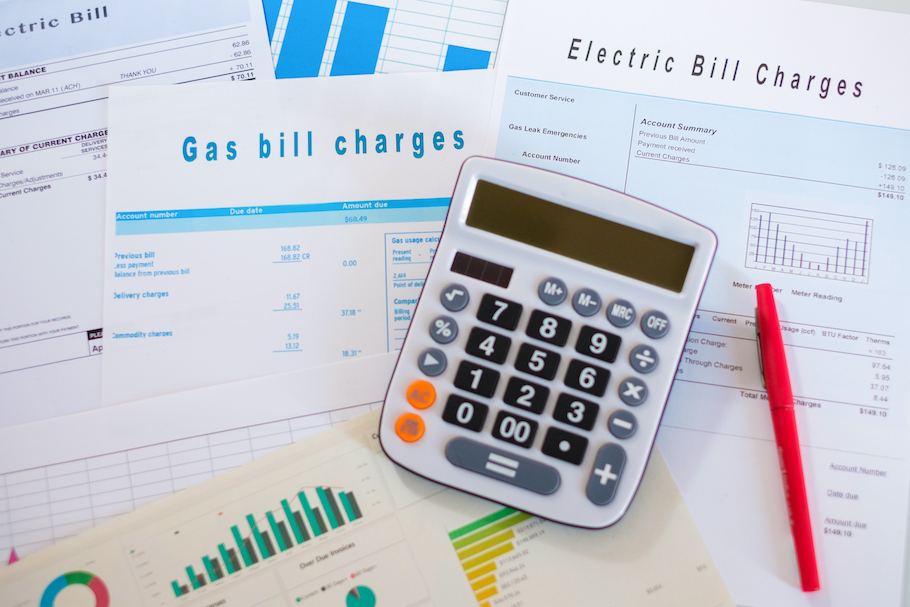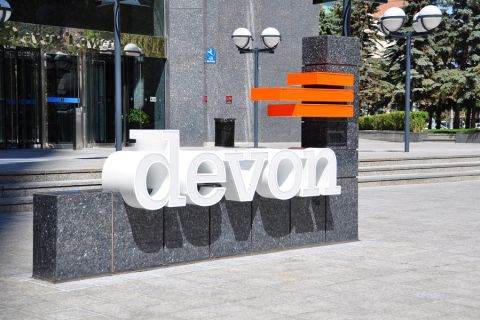The value of natural gas cannot be measured merely in terms of its most recent market price. Its prominent role in the energy mix relies on possessing three characteristics essential to any useful fuel: abundance, affordability and accessibility.
Abundance naturally leads to affordability when natural gas is traded on the market, and accessibility is provided by a large and sophisticated national pipeline system. Those characteristics take on an even greater importance in a social context when considering the challenges of ensuring sufficient affordable energy for all.


In 2015 the U.S. Energy Information Administration’s (EIA) Residential Energy Consumption Survey (RECS) found that almost one in three American households experienced challenges in paying energy bills. Tony Reames, a scholar at the University of Michigan who studies urban energy justice, wrote in a study that the COVID-19 pandemic only exacerbated the issues.
Energy poverty involves the difficulty in paying energy bills. In the U.S., those bills account for an average 2.15% of household income. The average spikes to 6% in one of four households, and energy costs account for 10% of income in one of 10 households.

(Source: tommaso79/Shutterstock.com)
The EIA found that about 20% of all households either reduced purchases of food or medicine, or were forced to do without to pay an energy bill at some point in 2015. About 14% received a disconnection notice for service, and in 11% of American households, temperatures were kept at unhealthy levels—too hot or too cold—to ensure that bills could be paid.
The survey found that 7 million households struggled with the decision of paying for food and medicine or paying the energy bill every month. Some 2 million households faced the possibility of disconnection every month.
The survey found only minor differences across geographic regions or between those living in urban and rural areas. It did find that energy poverty was related to structural features of housing and demographics.
“Households that included children, who had residents that identified with a minority racial group or as Hispanic, or were low income experienced more energy insecurity,” the EIA reported. “Households experiencing energy insecurity were also more likely to live in homes built before 1990.”
There are multiple causes for these inequities. Older homes tend to be less energy efficient, as are older appliances. Households without the means to purchase newer appliances like air conditioning units must pay more for energy to run old units.

Reames said the issue of energy efficiency even extended to light bulbs. For example, light emitting diode (LED) bulbs for residential use consume at least 75% less energy and last up to 25 times longer than incandescent lighting, according to the U.S. Department of Energy.
“We wanted to see—do low income households in their community have access to something as simple as an LED bulb?” he said in April 2021 during a podcast hosted by the University of Pennsylvania. “What we found was that stores in poor neighborhoods may or may not have LED bulbs at all on their shelves, and if they did, they were two times the cost than they were out in the suburbs in higher-income areas that had the advantage of stores like Walmart and Target and Home Depot and Lowe’s that aren’t located in many of our urban cores.”
Action needed
Perhaps the most striking finding is that the year of the survey, 2015, was when energy costs were at the lowest point in a decade. And yet, the least wealthy households in this country pay 26% more for energy per square foot than the most wealthy.
The shale revolution resulted in energy security for the U.S. and sharply reduced the cost of natural gas. It did not, and could not, eliminate energy poverty.
The prevalence of energy poverty makes it all the more imperative for government energy policy to ensure that natural gas, with its superior levels of abundance, affordability and accessibility, continue to play an important role in the energy mix.
The upshot
- One in three American households experiences some level of energy poverty and many are forced to decide on a regular basis between heating or cooling their homes, or buying food and medicine.
- The traits of natural gas—abundance, affordability and accessibility—are essential in combatting energy poverty.
- No single energy source can resolve energy poverty on its own, but gas needs to be an important component of any public policy that addresses it.
Click here to continue reading the "America's Natural Gas" report.
Recommended Reading
DXP Enterprises Buys Water Service Company Kappe Associates
2024-02-06 - DXP Enterprise’s purchase of Kappe, a water and wastewater company, adds scale to DXP’s national water management profile.
ARM Energy Sells Minority Stake in Natgas Marketer to Tokyo Gas
2024-02-06 - Tokyo Gas America Ltd. purchased a stake in the new firm, ARM Energy Trading LLC, one of the largest private physical gas marketers in North America.
California Resources Corp., Aera Energy to Combine in $2.1B Merger
2024-02-07 - The announced combination between California Resources and Aera Energy comes one year after Exxon and Shell closed the sale of Aera to a German asset manager for $4 billion.
DNO Acquires Arran Field Stake, Continuing North Sea Expansion
2024-02-06 - DNO will pay $70 million for Arran Field interests held by ONE-Dyas, and up to $5 million in contingency payments if certain operational targets are met.
Report: Devon Energy Targeting Bakken E&P Enerplus for Acquisition
2024-02-08 - The acquisition of Enerplus by Devon would more than double the company’s third-quarter 2023 Williston Basin production.





